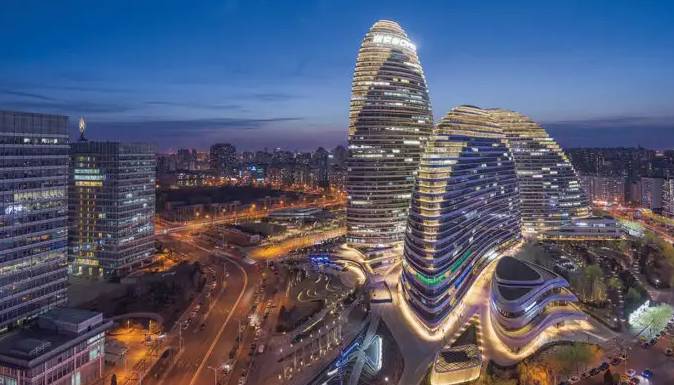Revisiting China post Covid-19 era: Beijing on top of World’s tourism map

Stay tuned with 24 News HD Android App

Nothing could be more exciting and to tell you frankly I was delighted to find out that I have been nominated as a member of an 8-member delegation which will visit the People’s Republic of China from May 24 to 30. All other colleagues in the delegation belong to prominent media organisations and are based in Lahore. Some of them have already visited different regions of China and each one of us has very pleasant memories of our previous visits.
It may be mentioned here that the outbreak of Covid on 31 Dec 2019, a novel coronavirus was first suspected and reported in Wuhan, China. Subsequently, on 7 January 2020, this coronavirus, termed SARS-CoV-2, was identified as the cause of an outbreak of viral pneumonia (COVID-19) in Wuhan. This led to a complete ban on travel to and from China that remained in place for well over three years.

How the government and the people of China fought this menace and overcome this killing disease is remarkable and a model for the rest of the world to follow. Challenged by this grave as well as a dangerous situation, China took several measures to contain its transmission not only to save its population but its spread to other parts of the world.
The measures taken by the governments were tracked and sorted daily from the websites of governmental authorities (e.g. National Health Commission of the People’s Republic of China). And the measures were reviewed and summarised by categorisations, figures and tables, showing an ever-changing process of combating an emerging infectious disease. The population shift levels, daily local newly diagnosed cases, daily mortality and daily local newly cured cases were used for measuring the effectiveness of these measures.

One glaring example of the Chinese nation accepting challenges and how efficiently it achieves its targets is the construction of a 1000-bed hospital in Wuhan in a world record time of only six days. This sound unbelievable. It may be recalled that the outbreak began in Wuhan, home to around 11 million people and the hospitals in the city had been flooded with concerned residents and pharmacies were running out of medicine. Video footage posted online by Chinese state media showed diggers at the site, which has an area of 25,000 square metres (269,000 square feet).
After five days, progress could be seen on the once-empty site. Its only parallel is a similar hospital that was set up in Beijing to help tackle the Sars virus in the year 2003. The hospital in Wuhan is a quarantined hospital where the authorities used to send people with infectious diseases so it has the safety and protective gear in place.

Another devastating effect of the Coronavirus was that it adversely nearly destroyed the tourism industry which was a major source of Chinese national income. There is hardly any doubt that China is a Global Tourist Destination and tourism is becoming increasingly important to China as both a source of revenue and a means of enhancing its international image. In 2018 alone, nearly 159 million “visitors” travelled to China. This figure includes all non-residents travelling to China for any length of time or purpose.
On the other hand, the Domestic tourist numbers are expected to reach around 4.55 billion in 2023, which is up by 80% year-on-year, while inbound and outbound tourists’ numbers are seen at more than 90 million, doubling year-on-year and recovering to 31.5% of pre-pandemic levels.

China's awesome and monumental ancient treasures exceed all other countries in size and number — from ancient palaces to the Great Wall, city walls, buried armies, canals, pagodas, temples, and giant Buddhas. One needs to see The Seven Ancient Wonders of China which is part of China's World Heritage.
This question is often asked if the travelling cost in China is very expensive. The answer is simply negative because travelling in China is affordable compared with other places in the world. Prices are much cheaper than in most Western countries, for everything from meals to train or plane tickets, but the fact is that the cost is increasing year by year.
The historical era when foreign tourists thronged China was the host of the 2008 Olympics for which a new stadium was built on the pattern of Bird’s Nest in the heart of Beijing city. The greatest challenge at that time to dealing with air pollution and smog when breathing was difficult and visibility was very limited. How did Beijing reduce air pollution during the 2008 Olympics is an interesting case study particularly because we in Lahore also suffer this menace every year.
The Chinese authorities imposed tougher emissions standards on coal-fired plants and the number of cars on the road was curbed to cut vehicle emissions. Local officials were given environmental targets, and coal-fired boilers in homes were replaced with gas or electric heaters.
Aiming to reduce road traffic and pollution Beijing announced a series of measures including a ban on heavy vehicles transporting construction waste, dirt, sand and gravel for nearly two months. In response to any forecast increase in air pollution levels, which often happens during the winter months, authorities will ban all medium- and heavy-duty fuel trucks from the road and the use of government vehicles will be cut by 80 per cent. Such are the reasons why it is proverbially said that the Chinese are a nation of Jinnis capable of doing wonders. The construction of the Three Gorges Dam is yet another landmark where the architects have bewildered their international counterparts.
For this scribe, visiting China has always been a dream and despite having visited this favourite country more than one and a half dozen times, my excitement was worth watching this time as well. We are embarking on the journey on the evening of May 23 on an Air China flight from Islamabad direct to Beijing.
